Insulation is an efficient and must-have solution to conserve energy; that’s why we have an Approved Document dedicated to it. With that said, there’s a lot of information to get to grips with in Part L, so where do you start?
We’ve broken down Approved Document L to help you understand what the sections refer to and what you must follow before moving forward with your conservation projects. So, let’s get to it!
Please Note: Approved Document Regulations are subject to change to improve the quality of standards to adhere to. To ensure you have the very latest guidelines, you should check the document via the Government website for any recent changes.
Table of contents
- Building Regulations Part L explained
- How to meet Part L Building Regulations
- Understanding the Building Regulations Part L download
- Section L1: Target rate calculations
- Section L2: Rate calculations
- Section L3: Consideration of high-efficiency alternative system
- Section L4: Limiting heat gains and losses
- Section L5: General guidance for minimum building services efficiencies and controls
- Section L6: System-specific guidance
- Section L7: Air permeability and pressure testing
- Section L8: Commissioning
- Section L9: Providing information
- Section L10: New elements in existing dwellings (extensions included)
- Section L11: Work to elements in existing dwellings
- Section L12: Consequential improvements
- Approved Document L changes through the years
Building Regulations Part L explained
Part L Building Regulations, also known as Approved Document L, discusses the importance of “Conservation of fuel and power”.
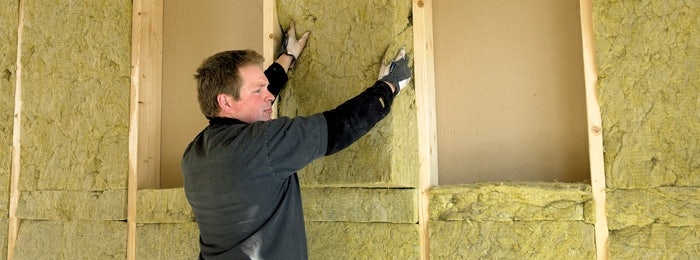
Where do Part L Building Regulations apply?
Specifically, the Approved Document deals with (quote):
“Building regulation in England setting standards for the energy performance of new and existing buildings.”
So, regardless of when the building was constructed, you must ensure it meets current energy standards according to those specified in the document. Dwellings include any “self-contained unit designed to accommodate a single household.”
Buildings used as nursing homes, student accommodation or similar are not dwellings. For specific information about these residential properties, please review Approved Document L, Volume 2: Buildings other than dwellings for applicable guidance.
How to meet Part L Building Regulations
Approved Document Part L is a considerably large part of the Building Regulations but do not skip over compliance requirements. Anything regarding quote, “building work must meet relevant requirements of the building regulations”. As such, you must do both of these:
- Follow the correct procedures
- Meet technical performance requirements
Now, with that said, there are some other notes about compliance. These can be summarised as follows:
Compliance is not a “one-and-done” deal
Just because you have followed the guidance in this document, this does not guarantee building work complies with regulation requirements. As said in Part L, “approved documents cannot cover all circumstances”.
If you are responsible for building work, you must consider if your actions following the guidance in the approved document will meet requirements in specific projects. Do your utmost to take in the intricate details from relevant sections of the document to prevent legal and potentially dangerous issues from occurring in future.
Other ways to comply with requirements may exist
Some solutions mentioned within the approved document may not apply to specific circumstances.
If that is the case, you are responsible for ensuring requirements are met and have another solution not described in said document, speak to the relevant building control body before moving forward (the earlier you check, the better) to see if your solution is acceptable.
Accountable parties
You can find information about accountable parties for building work in Volume 1 in Chapter 7 and Volume 2 paragraphs A26, B2 and F2 of Manual to the Building Regulations.
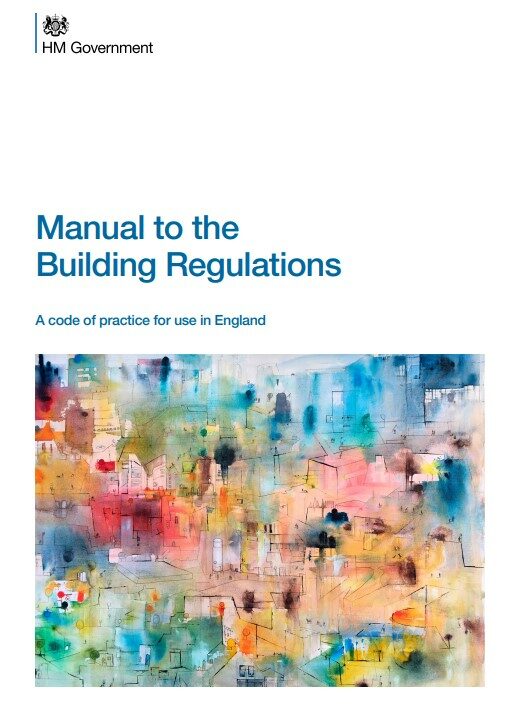
A summary of the persons responsible for building work can be found below:
- Agents
- Designers
- Builders
- Installers
- Building owner
Most importantly: Not following regulations is rule-breaking
It is lawbreaking if you do not follow correct procedures or do not meet technical performance requirements. As a building owner or person responsible for said works breaking the law, the local authority can prosecute you in the magistrates’ court in response to non-compliance.
Chapter B of Volume 2 of the Manual to the Building Regulations discusses the specifics of enforcing the regulations and sanctions in the existing system.
Understanding the Building Regulations Part L download
The document is split into sections. Each section covers specific regulations and requirements. For example, Section 1 covers regulations 24, 25, 25B, 26, 26A, 26C, 27, 27A and 27C. Alternatively, Section 4 covers requirement L1(a) of Schedule 1. Each regulation or requirement covered by the sections will be specified below.
Please note: All of the below can be understood further by viewing the official Approved L Document, including a list of terms via Appendices included in said record.
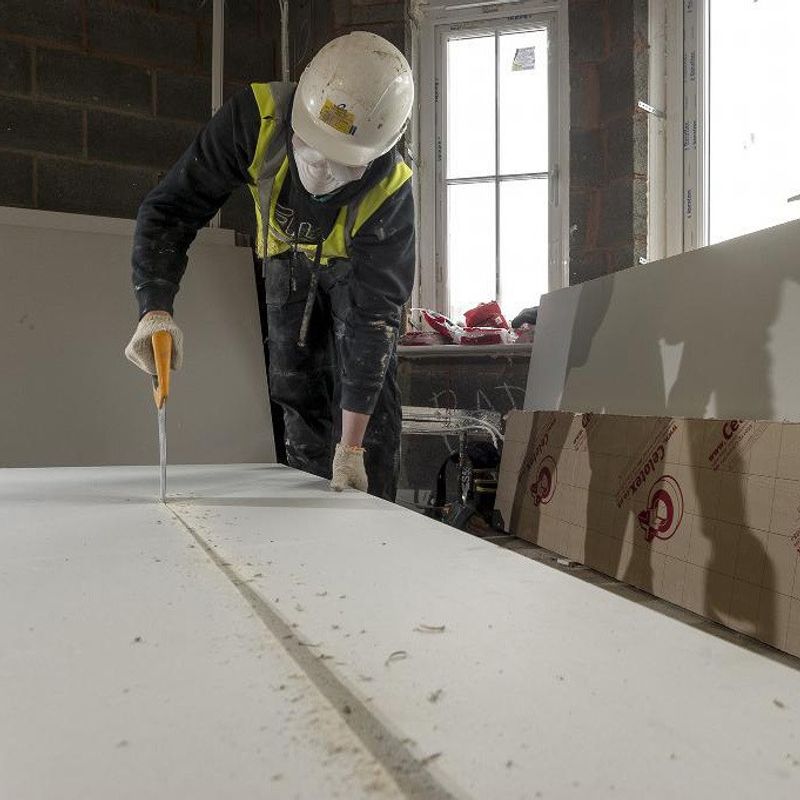
Section L1: Target rate calculations
In this section, you can find out more about calculating the target rates, including:
- Primary energy rate (kWhPE/m²)
- Emission rate (kgCO₂ /m²)
- Fabric energy efficiency rate (kWh/m²)
These calculations are for the following:
- Buildings that have multiple dwellings (specifics found via 1.4, 1.5 and 1.6)
- District heat networks (specifics found via 1.7)
- Notional dwelling specification (specifics found via 1.8)
Individual dwelling calculations must be assessed using the Government’s Standard Assessment Procedure.
Related building regulations for this section are 24, 25, 25B, 26, 26A, 26C, 27, 27A and 27C.
Section L2: Rate calculations
The same approved calculation tool (Government SAP, as stated above) must be used to calculate the following rates. In this section, you can find out more about calculating rates, including:
- Primary energy rate
- Dwelling emission rate
- Dwelling fabric energy efficiency rate
These calculations are for the following:
- Building control notification (specifics found via 2.4 and 2.5)
- Buildings that have multiple dwellings (specifics found via 2.6 and 2.7)
- Special considerations when calculating the dwelling primary energy rate and dwelling emission rate (specifics found via 2.8 to 2.14)
- Internal lighting in the dwelling emission rate and dwelling primary energy rate calculation (specifics found via 2.15)
- Achieving the target primary energy rate, target emission rate and target fabric energy efficiency rate (specifics found via 2.16 and 2.17)
Related building regulations for this section are 24, 25, 25B, 26, 26A, 26C, 27, 27A and 27C.
Section L3: Consideration of high-efficiency alternative systems
In this section, you can find more information about alternatives to install for high efficiency and the intention of limiting heat gains and losses.
Specifics found via 3.1 to 3.4.
Related Building Regulations requirement for this section is 25A.
Section L4: Limiting heat gains and losses
In this section, the document dives deeper into explaining the ins and outs of limiting heat gains and losses. These points cover:
- U-values (specifics found via 4.1 to 4.5)
- Limiting standards in new dwellings (specifics found via 4.6)
- Limiting standards in existing dwellings (specifics found via 4.7 to 4.13)
- Continuity of insulation (specifics found via 4.14 and 4.15)
- Thermal bridging (specifics found via 4.16 to 4.19)
- Airtightness (specifics found via 4.20 to 4.23)
- Limiting heat losses and gains from building services (specifics found via 4.24 to 4.32)
Related Building Regulations requirement is L1(a) of Schedule 1.
Section L5: General guidance for minimum building services efficiencies and controls
This section discusses general guidance for minimum building services efficiencies and controls. Specifically, for:
- New building services (specifics found via 5.1 to 5.3)
- Replacement building services in existing dwellings (specifics found via 5.1 to 5.7)
- Sizing heating and hot water systems (specifics found via 5.8 to 5.13)
- Controls (specifics found via 5.14 to 5.27)
Related Building Regulations requirements are L1(b)(i), (ii) and L2 of Schedule 1.
Section L6: System-specific guidance
This section includes a lengthy list of the types of systems related to these regulations and provides guidance for adhering to such standards.
- Gas-fired heating systems (specifics found via 6.1 to 6.7)
- Oil-fired heating systems (specifics found via 6.8 to 6.10)
- Electric space heating systems (specifics found via 6.11 to 6.14)
- Solid fuel heating systems (specifics found via 6.15 to 6.17)
- District heat networks and community heating systems (specifics found via 6.18 to 6.25)
- Micro combined heat and power (specifics found via 6.26 and 6.27)
- Underfloor heating systems (specifics found via 6.28 to 6.35)
- Heat pump heating systems (specifics found via 6.36 to 6.43)
- Solar water heating systems (specifics found via 6.44 to 6.48)
- Comfort cooling (specifics found via 6.49 to 6.53)
- Mechanical ventilation (specifics found via 6.54 to 6.56)
- Lighting (specifics found via 6.57 to 6.60)
- Building automation and control systems (specifics found via 6.61 to 6.63)
- On-site electricity generation and storage (specifics found via 6.64 to 6.67)
Related Building Regulations requirements are L1(b)(i), (ii) and L2 of Schedule 1.
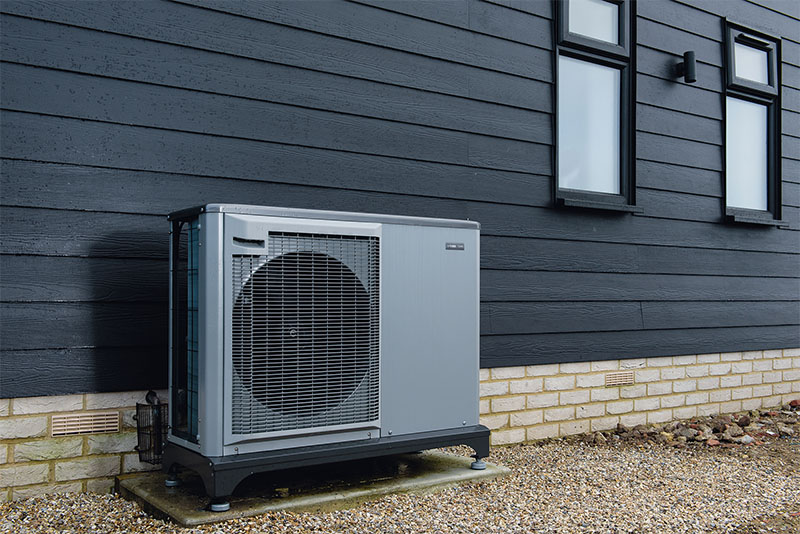 Section L7: Air permeability and pressure testing
Section L7: Air permeability and pressure testing
This section discusses showing compliance and reporting pressure test results. It also explains the requirement for a suitable air pressure testing procedure.
Specifics found via 7.1 to 7.8.
Related Building Regulations requirements are 43.
Section L8: Commissioning
This section explains the importance of a notice of completion and provides guidance for specific systems in commission situations.
Specifics found via 8.1 to 8.13.
Related Building Regulations requirements are 44 and 44ZA and requirements L1(b)(iii) and L2(b) of Schedule 1.
Section L9: Providing information
This section explains the methods of how you must provide information for new and existing dwellings. Specifically, it will discuss:
- Operating and maintenance instructions (specifics found via 9.1 and 9.2)
- Additional information for new dwellings (specifics found via 9.3 to 9.5)
- Additional information for work in existing buildings (specifics found via 9.6 to 9.9)
- Related Building Regulations requirements are Regulations 40 and 40A.
Section L10: New elements in existing dwellings (extensions included)
This section discusses what requirements to meet when adding new parts to an existing building. Specifically, this covers:
- General guidance (specifics found via 10.1)
- New and replacement fabric elements (specifics found via 10.2 to 10.6)
- Extension of a dwelling (specifics found via 10.7 to 10.11)
- Conservatories and porches (specifics found via 10.12 and 10.13)
Related Building Regulations requirements are 23(2) and requirement L1(a) of Schedule 1.
Section L11: Work to elements in existing dwellings
This section refers to what regulations need to be followed when making changes or improvements to features of existing dwellings. Specifically, this refers to:
- General guidance (specifics found via 11.1)
- Renovating thermal elements (specifics found via 11.2 to 11.4)
- Material change of use and change to energy status (specifics found via 11.5 to 11.8)
Related Building Regulations requirements are 6, 22 and 23(1) and requirement L1(a) of Schedule 1.
Section L12: Consequential improvements
This refers to energy efficiency improvements required by Regulation 28.
Specifics found via 12.1 and 12.2.
Related Building Regulations requirements are 28.
Approved Document L changes through the years
Since its initial enforcement in 2010, a few changes have been made to ensure they are up to date.
Main changes to Building Regulations Part L in 2022
Coming into effect until 15th June 2022 for use in England, these changes are now in full force and is as follows: “[This change] does not apply to work subject to a building notice, full plans application or initial notice submitted before that date, provided the work for each building is started before 15 June 2023”.
The most important part of these changes is that there are stricter standards to ensure new homes produce 31% fewer carbon emissions (at least) than the original standards specified in 2013.
As noted, these changes from 15 June 2022 are now in full force for any building work started on or after that date. If you require more information, full details of these transitional documents can be found on the Government website via the Circular Letter 01/2021.
Main changes to Building Regulations Part L in 2023
The primary focus of these changes referred to the section about ‘District heat networks and community heating’. They, quote:
“[Removed the] primary energy factor as a performance standard for dwellings.”
If you’re unsure about what this entails, please read the relevant section via the document.
Main changes to Building Regulations Part L in 2025
These are substantial changes for this document, with an arrival sparking determination for change as early as 2025. As of writing this article, the goal of these new changes in the document is to ensure a 75% carbon reduction standard is enforced, especially with the desire for energy efficiency becoming a big focus for homeowners in recent years.
All of this is part of the Future Homes Standards, which affects Part L and Part F of the Building Regulations for new dwellings.
So, what can you do to prepare for the enforcement of these changes? Well, let’s take a look:
Heat pump insulation
Newly built homes must have correct insulation levels for accommodating heat pumps and regulation changes. Volume housebuilders are leading professionals in this, regularly installing loft insulation to depths of 400mm to 500mm. This helps to maximise performance for a nominal increase in build cost.
Cavity widths
Widths are getting wider with 150mm becoming more common than anything below that. So, doing this not only helps you get ahead of the future Part L 22 changes, but by increasing said cavity width from the typical 100mm to 150mm, you’re minimising the impact on floor space or plot size while providing the best fabric performance.
Increased cavity widths also enable you to choose better insulation for the project. An example of this is if you have 150mm of an insulation slab, (e.g. DriTherm, ROCKWOOL etc), you have more reliable thermal and acoustic performance, plus the satisfaction of knowing it is non-combustible.
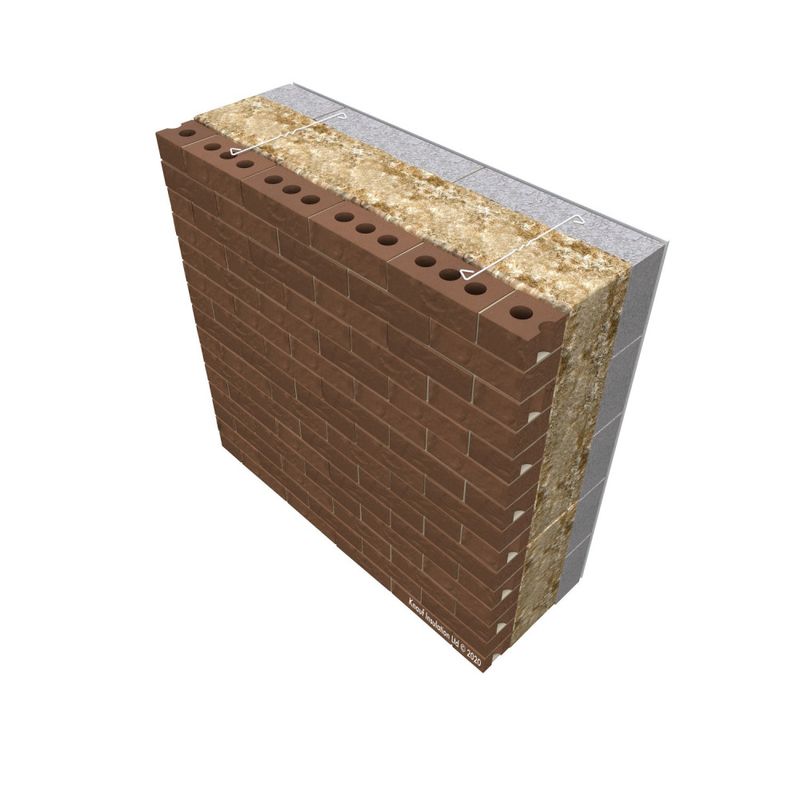
Another note is that 150mm slabs can help meet the standard of a 0.18 Watt Per Square Meter Per Kelvin U-value told in Part L for new dwellings.
Want to learn more about types of cavity wall insulation? We have a buyer’s guide dedicated to this type of project to help you out.
There we have it! Your guide to what is included within Part L of the Building Regulations. Here are the key takeaways:
- Keep updated with the latest document information.
- If you are uncertain at any point, then speak to the relevant building control body before you move forward with your project.
- Anything not defined as a dwelling will have different regulations (specified in Volume 2 of Part L).
Regardless of who you are, whether you’re a DIYer improving your own home or a tradesperson preparing for your next big project, this information is vital for you to know. For the owner, you can now be more aware of what your property needs and for the tradesperson you can make sure your clients trust your services because you have full awareness of the latest standards.
Where can you go from here? Our other help and advice, of course! We’ve got plenty of related information to help you out, including information on the diverse types of heat pumps like air source and ground source, as well as aftercare guidance to help you understand how to take care of it after installation.
We also have a dedicated guide for Build Regulation Part E if you’re eager to understand the importance of sound insulation. Go ahead and check out what we’ve got to help you out with your latest project.


























